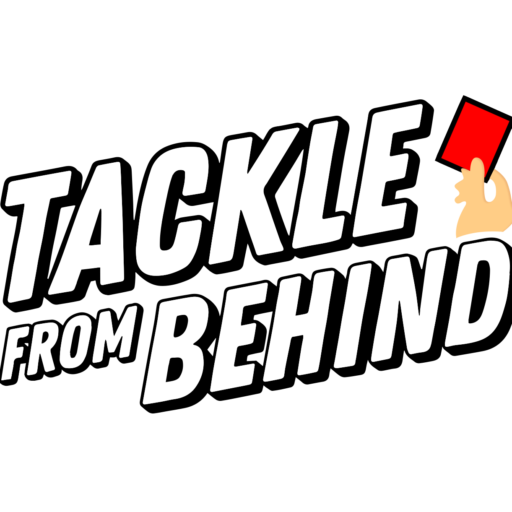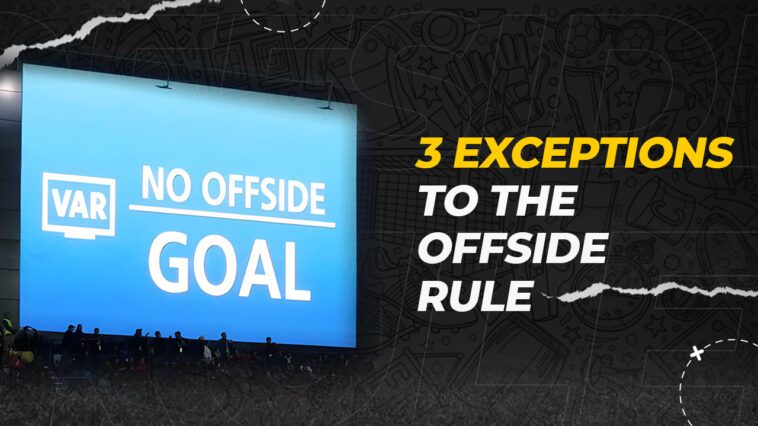The offside rule may be the most complicated rule in football, and we have seen many goals being disallowed due to this rule. But there are three set pieces where the offside rule doesn’t apply.
In this article, we look at three offside exceptions that let you bend the rule.
What is Offside?
Now, before we get into the exceptions, let’s quickly touch on what offside actually means. In simple terms, A played is offside when he receives the ball in the opponent’s half and any part of his body is ahead of the second-last defender.
You see, there are three specific situations where the offside rule doesn’t apply, and that’s what we’re going to focus on today. Buckle up, folks, because it’s about to get interesting!
The 3 Exceptions Where Offside Cannot be Called
- Corner Kicks: You know those magical moments when your team earns a corner kick, and everyone huddles up in the box like a bunch of hungry seagulls? Well, guess what? You can stand as close to the goal line as you want, and the referee won’t blow the whistle for offside! That’s right, even if you’re practically hugging the goalkeeper, as long as you receive the ball directly from the corner kick, you’re in the clear.
- Goal Kicks: Remember when your goalkeeper used to launch those almighty kicks down the field, and you’d sprint like a madman, hoping to catch the defense napping? Well, those days just got even better! If you’re in an offside position when the keeper plays that goal kick, but you receive the ball directly from them, you’re golden! No offside call, baby!
- Throw-ins: Ah, the good old throw-in. You know those moments when your teammate launches a missile down the line, and you’re lurking like a hungry shark, waiting to pounce? Well, get this – even if you’re in an offside position when they release that beast, as long as you receive the ball directly from the throw-in, you’re in the clear! It’s like having a free pass to terrorize the opposition’s defense.
Now, you might be wondering, “Why are these three situations exempt from the offside rule?” Well, my friend, it’s all about fairness and keeping the game flowing.
In a corner kick, goal kick, or throw-in situation, the attacking player is rarely a direct threat to the goal. They’re usually trying to win the second ball or create chaos in the box. So, calling offside in these situations would just disrupt the flow of the game unnecessarily.
Why can’t you be offside from a Corner kick?
According to the rules you cannot be offside from a corner kick. Even if you are in offside position the referee cannot call you offside.
In a Corner kick situation, you can stand ahead of the last defender and receive the ball to score a goal and you won’t be called offside because you have received the ball from a Corner kick.
However, this only applies if you receive the ball directly from the corner kick. If your teammate passes the ball to you and you are in an offside position then you will be called offside.
Let us explain this with an example,
- No Offside :

As you can see in the image above player number 3 in yellow is standing in an offside position when he receives the ball, but because he gets the directly from the corner kick he cannot be called offside.
- Offside:

In the scenario, player number 3 in yellow receives the ball from his teammate(no 2) instead of directly from the corner kick and hence he will be called offside.
Why can’t you be offside from a goal kick?
According to the offside rules, you cannot commit an offside offence from a Goal kick. Even if you are in an offside position when the ball is played to you.
When the Original offside laws were written in 1863 , A player was considered to be in an offside position when he was ahead of the ball when his teammates kicked the ball.
This meant that in a Goal kick scenario when the Goalkeeper kicked the ball all the players would be called offside based on the rule, and thus an exception was needed for the goal kick.
A goalkeeper can kick the ball directly into the opponent’s half from a goal kick to his teammate who could be in an offside position and he the referee won’t call him offside.
However, this only applies if the ball is directly played to you by the goalkeeper if you receive the ball from a teammate heading the goal kick into your direction and you are in an offside position then you will be called offside.
Let us explain this with an example,
- No offside :

In the image above you can see Player no 3 is in an offside position, but because he has received the ball directly from a goal kick he cannot be called offside.
- Offside:

In the image above you can see the Goalkeeper playing the goal kick toward player no 2 in yellow who then passes the ball into player no 3 who is in an offside position and because he receives the ball from his teammate instead of directly from the goal kick he will be called offside.
A player can also be called Offside when he is an offside position when the Goalkeeper kicks the ball towards him from an open play.
Why can’t you be offside from a throw-in?
According to the rules you cannot be offside from a throw-in. Even if you are in an offside position when the throw-in was played to you.
You can receive the ball from a throw-in while being in an offside position and go on to score a goal and the Goal will not be disallowed.
Why are these 3 set pieces an exception from offside?
Good question! The reason behind these exceptions is simple – it’s all about keeping the game flowing and avoiding unnecessary disruptions.
In a corner kick, goal kick, or throw-in situation, the attacking player is rarely a direct threat to the goal. They’re usually trying to win the second ball or create chaos in the box. Calling offside in these situations would just disrupt the flow of the game unnecessarily.
Additionally, when the offside rule was first written back in 1863, a player was considered offside if they were ahead of the ball when their teammate kicked it. This meant that in a goal kick scenario, pretty much everyone would be offside, which didn’t make much sense. Hence, the exception was introduced.
FAQ
What are the 3 exceptions where offsides will not be called?
Players cannot be offside in their own half of the field. It is not possible to be offside from a throw-in, corner kick or goal kick. If the ball is deliberately played by a member of the opposing team, an attacker cannot be offside.
Can you be offsides if the ball is passed backwards?
There is no law that states that a player cannot be offside if the ball is played backwards. But a player cannot be offside if they are behind the ball when it is played to them.
Is there a new offside rule?
FIFA is trying a new offside rule. Now, attackers only have to be behind the last defender with any part of their body to be onside. In the past, even a tiny bit offside was enough for a foul.
Conclusion
There you have it, folks – the three magical exceptions to the offside rule: corner kicks, goal kicks, and throw-ins. Remember, as long as you receive the ball directly from one of these set pieces, you can position yourself as close to the goal line as you want, and the referee won’t blow that whistle for offside.
As we said before an attacking player cannot be a direct threat on goal from a corner, a goal kick, or a throw-in as compared to a free kick where there is a higher chance of the player scoring the goal.
It makes less sense to call a player offside when there is no clear advantage and stop the flow of the game and thus the corner kick, the goal kick and the throw-in are an exception to the offside rule.



